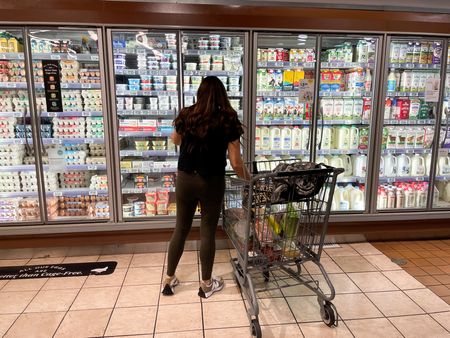
WASHINGTON(Reuters) – U.S. consumer spending increased solidly in October, while inflation moderated, giving the economy a powerful boost at the start of the fourth quarter as it navigates a high interest rate environment.
Consumer spending, which accounts for more than two-thirds of U.S. economic activity, jumped 0.8% after an unrevised 0.6$ increase in September, the Commerce Department said on Thursday. October’s gain was in line with economists’ expectations.
Spending last month was boosted by wage gains amid labor market resilience, one-time tax refunds in California, which saw some households receiving as much as $1,050 in stimulus checks, and cost of living adjustments for food stamp recipients.
The Federal Reserve is in the midst of what has become the fastest rate-hiking cycle since the 1980s, as it battles high inflation, raising the risks of a recession next year. Fed Chair Jerome Powell said on Wednesday the U.S. central bank could scale back the pace of its rate increases “as soon as December.”
That intention was supported by a moderation in the inflation trend last month. The personal consumption expenditures (PCE) price index rose 0.3 after advancing by the same margin in September. In the 12 months through October, the PCE price index increased 6.0% after advancing 6.3% in September.
Excluding the volatile food and energy components, the PCE price index rose 0.2% after gaining 0.5% in September. The so-called core PCE price index climbed 5.0% on a year-on-year basis in October after increasing 5.2% in September.
The Fed tracks the PCE price indexes for its 2% inflation target. Other inflation measures have shown signs of slowing. The annual consumer price index increased less than 8% in October for the first time in eight months.
The Fed has raised its policy rate by 375 basis points this year from near zero to a 3.75%-4.00% range.
News on the labor market remained upbeat, though demand for workers is slowing.
A separate report from the Labor Department on Thursday showed initial claims for state unemployment benefits dropped 16,000 to a seasonally adjusted 225,000 for the week ended Nov. 26. That unwound some of the surge in the prior week, which had boosted claims.
While some of the rise reflected a surge in layoffs in the technology sector, claims also tend to be volatile at the start of the holiday season as companies temporarily close or slow hiring. Overall, claims remain in line with pre-pandemic levels. Economists had forecast 235,000 claims for the latest week.
The Fed’s Beige Book on Wednesday reported “scattered”
layoffs in November in the technology, finance, and real estate sectors, but noted that “some contacts expressed a reluctance to shed workers in light of hiring difficulties, even though their labor needs were diminishing.”
Technology layoffs helped to boost job cuts announced by U.S-based companies in November, a third report from global outplacement firm Challenger, Gray & Christmas showed on Thursday. Planned job cuts surged 127% to 76,835 last month.
The technology sector announced 52,771 layoffs, the largest since 2000. There were also notable increases in the automotive, consumer products, construction, healthcare products and transportation industries.
Employers have announced 320,173 job cuts this year, up 6% compared to the same period in 2021. Still, the year-to-date total is the second lowest on record.
(Reporting by Lucia Mutikani; Editing by Chizu Nomiyama)

